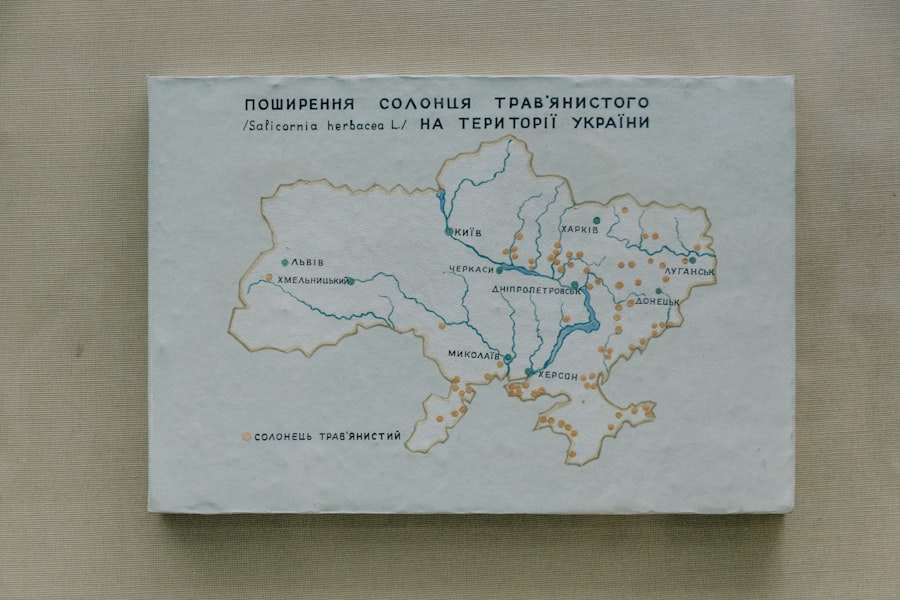The Drake Passage, a body of water situated between the southern tip of South America and Antarctica, is renowned for its tumultuous seas and unpredictable weather. Spanning approximately 800 kilometers (500 miles) in width, it serves as a critical maritime route for vessels traveling to and from the Antarctic region. Named after the English explorer Sir Francis Drake, who navigated these waters in the late 16th century, the passage is often characterized by its challenging conditions, making it both a formidable obstacle and a gateway to one of the most pristine environments on Earth.
The geographical significance of the Drake Passage cannot be overstated. It acts as a natural barrier that separates the Atlantic and Pacific Oceans, facilitating the exchange of oceanic currents and influencing global climate patterns. The passage is also home to a unique marine ecosystem, where cold waters from the Antarctic converge with warmer currents from the north.
This convergence creates a rich habitat for various species, making it an area of interest for scientists and adventurers alike. Understanding the dynamics of the Drake Passage is essential for anyone planning to traverse its waters, as it sets the stage for the experiences that await.
Key Takeaways
- The Drake Passage is a body of water between South America’s Cape Horn and the South Shetland Islands of Antarctica, known for its rough seas and challenging sailing conditions.
- Weather in the Drake Passage can be unpredictable, with strong winds and high waves, making it important to choose the right time of year for a smoother journey.
- The travel time and distance across the Drake Passage can vary depending on the route and vessel, with the average crossing taking around 2-3 days.
- When choosing a vessel for the journey, consider factors such as size, stability, and amenities to ensure a comfortable and safe experience.
- Packing essentials for the journey include warm and waterproof clothing, sturdy footwear, seasickness medication, and binoculars for wildlife spotting opportunities.
Weather and Sea Conditions
The weather in the Drake Passage is notoriously unpredictable, with conditions that can change rapidly within a matter of hours. Travelers should be prepared for a range of weather scenarios, from calm and sunny days to fierce storms with high winds and towering waves. The passage is often described as one of the roughest stretches of ocean in the world, with swells that can reach heights of up to 15 meters (50 feet).
This variability is primarily due to the lack of land barriers, allowing winds to sweep across the open water unimpeded. Understanding these sea conditions is crucial for planning a journey through the Drake Passage. The best time to cross is typically during the austral summer months, from November to March, when weather patterns are generally more stable.
However, even during this period, travelers should remain vigilant and flexible in their plans. The unpredictability of the weather can lead to delays or changes in itineraries, emphasizing the importance of choosing a reputable travel operator that prioritizes safety and has contingency plans in place.
Travel Time and Distance

Traveling through the Drake Passage is not just about crossing a body of water; it involves careful consideration of travel time and distance. The journey typically takes between 24 to 48 hours, depending on the vessel’s speed and the prevailing sea conditions. For many travelers, this crossing represents a significant portion of their expedition to Antarctica, making it an integral part of their overall experience.
The distance covered during this journey can vary based on the specific route taken by the vessel. Most expeditions will follow a direct path from Ushuaia, Argentina, to various points along the Antarctic Peninsula. This direct route spans approximately 1,200 kilometers (750 miles).
However, some itineraries may include additional stops or detours to explore nearby islands or other points of interest, which can extend travel time. Regardless of the specifics, travelers should mentally prepare for this segment of their journey, as it serves as both a transition into an extraordinary environment and an opportunity for reflection on their adventure ahead.
Choosing the Right Vessel
| Vessel Type | Advantages | Disadvantages |
|---|---|---|
| Fishing Boat | Good for small-scale fishing | Limited storage capacity |
| Cargo Ship | Can transport large quantities of goods | High operating costs |
| Pleasure Yacht | Great for leisure activities | Expensive to maintain |
Selecting the appropriate vessel for a journey across the Drake Passage is paramount to ensuring a safe and enjoyable experience. Various types of ships are available, ranging from large cruise liners to smaller expedition vessels.
Larger ships may offer more amenities and stability in rough seas, while smaller vessels can provide a more intimate experience with opportunities for closer wildlife encounters. When choosing a vessel, travelers should consider factors such as comfort level, onboard facilities, and crew expertise. Expedition vessels often come equipped with ice-strengthened hulls designed to navigate icy waters safely.
Additionally, they typically have knowledgeable guides who can enhance the experience by providing insights into the unique environment and wildlife encountered along the way. Ultimately, selecting the right vessel can significantly impact one’s overall experience in the Drake Passage and beyond.
Packing Essentials for the Journey
Packing for a journey through the Drake Passage requires careful consideration of both comfort and practicality. Given the unpredictable weather conditions, travelers should prepare for a range of temperatures and activities. Layering is key; packing moisture-wicking base layers, insulating mid-layers, and waterproof outer layers will help ensure comfort throughout the journey.
Accessories such as hats, gloves, and scarves are also essential for protection against wind and cold.
Binoculars are invaluable for wildlife spotting, while cameras are essential for capturing breathtaking landscapes and memorable moments.
A good book or journal can provide entertainment during downtime or serve as a means to document experiences along the way. By thoughtfully considering what to pack, travelers can ensure they are well-prepared for their adventure across this iconic passage.
Safety Precautions and Emergency Procedures

Safety should always be a top priority when embarking on a journey through the Drake Passage. Travelers should familiarize themselves with safety protocols established by their chosen vessel’s crew before setting sail. This includes understanding emergency procedures such as evacuation routes and safety drills that may be conducted during the voyage.
Knowledge of these protocols can provide peace of mind and ensure that everyone on board knows how to respond in case of an emergency. Additionally, travelers should be aware of potential hazards associated with crossing the Drake Passage. The risk of rough seas necessitates that passengers remain vigilant about their surroundings while on deck or moving about the ship.
Wearing appropriate footwear with non-slip soles can help prevent accidents during turbulent conditions. Furthermore, travelers should heed any advice or warnings issued by crew members regarding weather conditions or safety measures throughout their journey.
Wildlife Spotting Opportunities
One of the most exciting aspects of traveling through the Drake Passage is the opportunity to observe diverse wildlife in its natural habitat. The waters are teeming with life, including various species of whales, seals, and seabirds that thrive in this unique ecosystem. Travelers may have the chance to spot majestic humpback whales breaching or playful orcas swimming alongside their vessel.
The sighting of these magnificent creatures often leaves an indelible mark on travelers’ memories. Birdwatching enthusiasts will also find plenty to marvel at during their journey through the passage. Species such as albatrosses, petrels, and skuas are commonly seen soaring above the waves or gliding gracefully alongside ships.
Many expedition vessels offer guided wildlife spotting sessions led by knowledgeable naturalists who can provide insights into each species’ behavior and ecology. These encounters not only enrich travelers’ experiences but also foster a deeper appreciation for the fragile ecosystems that exist in this remote part of the world.
Tips for Minimizing Sea Sickness
For many travelers, crossing the Drake Passage can be synonymous with seasickness due to its notorious rough waters. However, there are several strategies that individuals can employ to minimize discomfort during their journey. One effective approach is to choose accommodations on lower decks where motion is less pronounced compared to higher levels of the ship.
Additionally, staying hydrated and consuming light meals can help mitigate nausea. Over-the-counter medications specifically designed for motion sickness can also be beneficial for those prone to discomfort at sea. Travelers should consult with their healthcare provider before departure to determine which options may be best suited for them.
Engaging in light physical activity on board—such as walking around or participating in onboard activities—can also help alleviate symptoms by keeping blood circulation steady. By taking proactive measures against seasickness, travelers can focus on enjoying their adventure rather than being sidelined by discomfort.
Entertainment and Activities on Board
While traversing the Drake Passage may involve long hours at sea, many vessels offer a variety of entertainment options and activities designed to keep passengers engaged during their journey. Onboard lectures led by experts in marine biology or glaciology provide valuable insights into the unique environment travelers are about to explore. These educational sessions not only enhance understanding but also build excitement for what lies ahead.
In addition to educational programming, many ships feature recreational activities such as yoga classes or photography workshops that allow passengers to unwind and connect with fellow travelers. Social gatherings in lounges or dining areas provide opportunities for camaraderie over shared experiences while enjoying delicious meals prepared by talented chefs onboard. With a range of activities available, passengers can find ways to make their time at sea enjoyable and enriching.
Historical and Scientific Significance of the Passage
The historical significance of the Drake Passage extends beyond its challenging waters; it has played a pivotal role in maritime exploration and scientific research over centuries. Early explorers like Sir Francis Drake paved the way for future expeditions into Antarctica, contributing to our understanding of geography and navigation during an era when such journeys were fraught with peril. Today, researchers continue to study this region’s unique oceanographic conditions and their implications for global climate change.
The scientific importance of the Drake Passage cannot be understated either; it serves as a natural laboratory for studying marine ecosystems and biodiversity in extreme environments. Ocean currents flowing through this passage influence global climate patterns while supporting diverse marine life that thrives in its cold waters. Ongoing research efforts aim to monitor changes within these ecosystems as climate change impacts become increasingly evident worldwide.
Arrival and Disembarkation Process
As travelers approach their destination after crossing the Drake Passage, anticipation builds for what awaits them on land. Upon arrival at various points along Antarctica’s coastline or islands nearby, disembarkation procedures typically involve organized groups led by crew members who ensure smooth transitions from ship to shore. Passengers may be required to wear special gear such as waterproof boots or life jackets during landings depending on local conditions.
Once ashore, travelers are often greeted by breathtaking landscapes characterized by towering glaciers and pristine ice formations—a stark contrast to their time spent at sea. Guided excursions may include opportunities for hiking or wildlife observation while adhering strictly to environmental guidelines aimed at preserving this fragile ecosystem. The arrival process marks not only an end to one leg of their journey but also serves as an exciting beginning filled with exploration opportunities in one of Earth’s last frontiers.
Traveling through the Drake Passage is a unique and challenging experience due to its unpredictable weather and rough seas. This narrow body of water, located between the southern tip of South America and Antarctica, is notorious for its strong currents and high winds, which can significantly affect travel time. For those interested in learning more about the geographical and historical significance of the Drake Passage, as well as tips for navigating this treacherous route, you can explore a related article on the topic by visiting MyGeoQuest. This resource provides valuable insights and information for adventurers planning to embark on this remarkable journey.
WATCH NOW! Drake Passage: Earth’s Deadliest Waters Revealed
FAQs
What is the average travel time for crossing the Drake Passage?
The average travel time for crossing the Drake Passage is approximately 2 days, but it can vary depending on weather conditions and the specific route taken by the vessel.
What factors can affect the travel time across the Drake Passage?
Weather conditions, including wind and waves, can significantly affect the travel time across the Drake Passage. Additionally, the specific route taken by the vessel and the type of vessel being used can also impact the travel time.
Are there any alternative routes or transportation options for crossing the Drake Passage?
There are no alternative routes for crossing the Drake Passage by sea, as it is the only navigable route between South America and Antarctica. However, some travelers may choose to fly over the Drake Passage instead of crossing it by sea.
What is the best time of year to cross the Drake Passage in terms of travel time?
The best time of year to cross the Drake Passage in terms of travel time is during the Antarctic summer, which runs from November to March. During this time, the weather conditions are generally milder, which can result in a smoother and faster crossing.
What are some tips for minimizing travel time across the Drake Passage?
To minimize travel time across the Drake Passage, travelers can choose a vessel with a higher cruising speed, plan their trip during the Antarctic summer, and be flexible with their travel dates to account for potential delays due to weather conditions.
